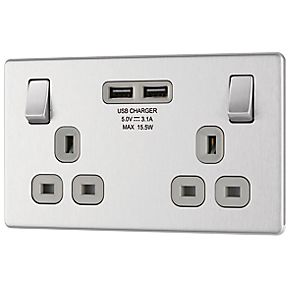Hello,
I've decided to do my first ever bit of electrical work - Starting simple with replacing a plastic wall mounted light switch with a sunken metal one.
I noticed on the consumer unit that half of it is RCD protected and the other half isn't, the lights being on the side that isn't. It made me think, would this be safe using a metal faceplate? I am of course going to attach the earth to the metal faceplate and run another earth wire from there to the backbox.
Cheers
Edit - Also while i'm here, does anyone know if there's any reason it would be a bad idea to use the screws off the old faceplate and cut them down in length a bit so they fit the new backbox?
I've decided to do my first ever bit of electrical work - Starting simple with replacing a plastic wall mounted light switch with a sunken metal one.
I noticed on the consumer unit that half of it is RCD protected and the other half isn't, the lights being on the side that isn't. It made me think, would this be safe using a metal faceplate? I am of course going to attach the earth to the metal faceplate and run another earth wire from there to the backbox.
Cheers
Edit - Also while i'm here, does anyone know if there's any reason it would be a bad idea to use the screws off the old faceplate and cut them down in length a bit so they fit the new backbox?
Last edited:


